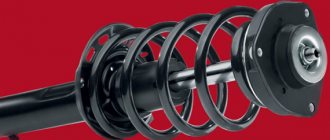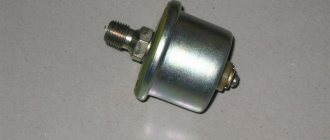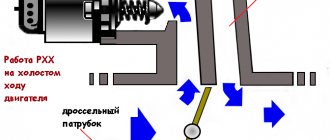Types of trailers
- Onboard. The best option for transporting building materials.
- For transportation of equipment and machinery. Each type of vehicle has its own models. They are often equipped with compact cranes for loading.
- Homes on wheels. Covered vans, equipped with everything you need. An ideal option for those who love to travel, but are not ready to pay for hotels.
The best trailers for trucks and special equipment
Such models have large dimensions and durable construction. They are used to transport cargo, equipment and machinery weighing over 750 kilograms. These trailers are equipped with braking systems and require a driver category “E” to operate.
MZSA 842122.301
4.5
★★★★★
editorial assessment
100%
buyers recommend this product
The V-shaped drawbar of the model is made of a closed steel profile and galvanized. It can withstand high dynamic loads and is not subject to corrosion. A special handle makes it easier to move the trailer without a tractor and install it on the tow bar. The bottom is made of multi-layer laminated plywood and is characterized by increased wear resistance.
The load capacity reaches 2590 kg, the dimensions are 5.8 x 2.35 x 1.96 m. The tailgate can be folded down for easy delivery of equipment. The spring-balance suspension guarantees an even distribution of the load between the axles and wheels when driving on uneven sections of the road.
Advantages:
- high load capacity;
- rear side ladder;
- high strength;
- ease of maintenance;
- three autonomous braking systems.
Flaws:
- high price.
MZSA 842122.301 is worth purchasing for the transportation of motorcycles and special equipment, large cargo.
PromAgroTrailer 9835-22-2
4.9
★★★★★
editorial assessment
95%
buyers recommend this product
The model received an inertial overrun brake, which allows it to be used in conjunction with vehicles equipped with a hydraulic vehicle. These include light commercial trucks Citroen, IVECOm GAZelle, etc. The platform deck is made of 3 mm thick steel and is not afraid of heavy loads.
With dimensions of 5.3x2.54x1.55 m, the weight of the model is 1000 kg. The trailer has a safety margin for the weight of the transported cargo up to 4000 kilograms. It can be connected to towbars of various types: ball, loop, etc. The electrical equipment is compatible with 12 and 24 volt on-board networks.
Advantages:
- high strength;
- inertia brake;
- high load capacity;
- universal connection.
Flaws:
- difficulty of installation.
PromAgroTrailer 9835-22-2 is designed for transporting small-sized equipment. It will be useful when installing construction equipment.
NefAZ 8332
4.8
★★★★★
editorial assessment
90%
buyers recommend this product
The model is equipped with two brake systems. The working two-wire one makes it easier to stop when moving as part of a road train, the parking one allows you to fix the trailer in a stationary state while loading. Both systems are independent of each other.
The maximum load capacity is 12 tons, body dimensions are 6.1 x 2.5 x 0.7 m. The metal welded platform is resistant to deformation, shock loads and corrosion. Folding side and rear sides make it easier to install machinery and equipment on the site.
Advantages:
- high load capacity;
- two brake systems;
- folding sides;
- high strength;
- ease of downloading.
Flaws:
- low maneuverability.
NefAZ 8332 will be useful for regular transportation of a wide range of goods.
READ ALSO
10 Best Truck Tires
Trailer cost
Car enthusiasts who have decided for themselves the question of which trailer to choose for a passenger car note in reviews that its price directly depends on its equipment and dimensions. A small trailer for a passenger car will cost 30-40 thousand rubles; boat trailers with a frame structure are a little more expensive - 40-50 thousand.
The most expensive are motorhomes: their cost is equivalent to the price of a brand new foreign car and varies from 600 thousand to one and a half million rubles, depending on the equipment and dimensions. As a rule, there is no upper threshold, since such a trailer can be made to order and for any amount.
The best way to choose a passenger trailer-house is on the secondary market: the minimum price for used models is 200 thousand.
Trailers for transporting water equipment (jet ski or boat/boat)
A light boat/boat trailer has several fundamental differences in its design from analogues intended for transporting building materials. The thing is that trailers for transporting jet skis and other similar equipment are used not only to move water transport across the surface of the earth, but also to unload it into the water and load it back. Therefore, in such systems there are no sides and a solid base. This allows:
- It is relatively easy to move the trailer in the water;
- Load/unload water equipment even in unfavorable weather conditions, without fear of causing serious damage to it.
Article on the topic: Engine fuel injection pump - what is it
Of these systems, the following models are in good demand: Dolphin 6.0, Dolphin 5.5, Dolphin 6.5, Ruff 4.7, Dolphin 3.5, 3.9.
The photo shows a passenger trailer for transporting a jet ski (jet ski)
For the most part, models differ in their carrying capacity and spatial dimensions, and most configurations include:
- Adjustable inserts.
- A winch that allows you to pull water transport onto a trailer.
- Nose pad.
Trailer license
The need for a driver's license depends on how to select a trailer for a passenger car by weight. When purchasing a trailer, it is advisable to familiarize yourself with its technical characteristics, in particular, with the item “permitted maximum weight”, which means the weight of the trailer and its carrying capacity. A category B license allows you to operate trailers weighing no more than 750 kilograms.
There are two more conditions. First, the curb weight of the vehicle must not be less than the permitted weight of the trailer. Secondly, the total weight of the car and trailer should not exceed 3500 kilograms.
The legal limit of 750 kilograms is more than enough in most cases. If a car owner is thinking about how to choose the right trailer for a car, targeting a motor home and similar models, then it is worth getting a driver’s license.
Trailers for transporting snowmobiles, ATVs or construction materials
Trailers for snowmobiles and ATVs are a fairly universal design, as they additionally allow the transportation of construction materials.
The design feature of a trailer for an ATV or snowmobile is a fairly wide working surface, which is made in the shape of a square or rectangle. Such systems have a folding tailgate and two main wheels, which makes it easy to tilt the trailer, if necessary. The weight of a trailer of this type is relatively small - in most cases it does not exceed one ton, of course, unless it is some kind of special custom-made design, for example, designed for two snowmobiles at the same time. The presence of spring suspension in such systems makes it possible to increase the reliability of the trailer and guarantee the integrity of the transported cargo.
This single axle trailer (Model 829470) is perfect for transporting one or two snowmobiles and an ATV.
In our country, the most popular models are: “Sport” and “Foreman” from. A potential customer has the opportunity to purchase similar structures with or without an awning.
Most of the configurations of such trailers include:
- Folding tailgate, with the ability to quickly dismantle this element.
- A jack that allows you to raise/lower a structure and fix it in a certain position.
- Support leg with wheel.
- Side reinforcements, especially the rear ones.
- Fastening elements necessary for securing loads.
Article on the topic: Starter Ural-4320
Naturally, the list of additional equipment may vary, depending on the selected model, individual orders and other factors. For example, a person may purchase a trailer with a brake system or decide to save his money, relying only on the capabilities of a personal car.
Towbar installation
After collecting all the necessary documents and purchasing a trailer, all that remains is to install a towing device (or towbar) on the vehicle. The design of the element on passenger cars is primitive: a bracket is attached to the body, on which a hook with a ball is located, and the trailer coupling head is placed on it.
On towbars of the old design, the hook is tightly welded to the bracket. The advantage of such a system is its low cost, which is why it is quite popular in Russia. The best option for a towing device, according to experts, is a model with the ability to dismantle the hook.
A hook sticking out from under the bumper can cause considerable problems in the event of a traffic accident. The device bracket is usually attached to the strength elements of the car body - side members, which can be deformed under a strong impact. Their restoration is a more complex and expensive procedure than replacing the same bumper.
Along with the tow bar, there is an outlet on the rear bumper to which the trailer's electrical equipment is connected. This is not difficult to do, since the trailer wiring is connected to a harness that runs in the luggage to the rear lights. The cost of installation of a towbar and electrical work is 2-4 thousand rubles.
Before choosing a trailer for a VAZ passenger car or any other brand, you need to take into account several nuances. Connecting electrics to the on-board network of modern vehicle models requires the installation of an adapter or a matching unit. The whole procedure, together with the cost of the block, will cost 6-12 thousand rubles. “Smart” on-board networks can be found not only on premium cars, but also on middle-class cars.
The second nuance is the type of connector. American-made trailers require a 13-pin connector, European ones require a 7-pin connector. European trailers can be connected to a vehicle with American wiring without reinstalling the equipment - just purchase a special adapter.
There is no need to skimp on a towbar, so it is advisable to purchase high-quality devices from proven and reliable manufacturers.
How to properly load a trailer
The center of mass of the load should be on the trailer axle; in this case, the load on the coupling device will be minimal.
In addition, you will eliminate the influence of the load on the rear suspension and the car body, relieving them of unnecessary load - lifting or downforce. This will extend the service life of the trailer and towbar, and will not affect the vehicle’s handling due to changes in the load on the rear axle. In this case, the load must be well secured to eliminate the possibility of its displacement or, especially, loss.
The maximum permissible constant load on the ball is from 30 to 90 kg, a larger deviation can only be short-term (the phenomenon of impact on uneven roads). In any case, when driving a trailer, maintain a speed of no more than 70 km/h on the highway, think about increased inertia and changes in dimensions. You can learn more about driving a trailer from the article “Driving a car with a trailer”
Inspection, insurance and transport tax for trailer
After purchase, the trailer is registered with the State Traffic Safety Inspectorate. The procedure is no different from registering any other vehicle. The owner must have with him a title, a purchase and sale agreement, receipts for payment of state fees, which upon completion are exchanged for a registration certificate and license plates.
Individuals who have purchased a trailer for a light car do not need to obtain compulsory motor liability insurance, pay transport tax or undergo technical inspection. Legal entities require both insurance and technical inspection. With transport tax, everything is somewhat simpler: even owners of multi-ton trucks do not pay it.
Garage business or not? Earning money from the production and repair of trailers for passenger cars
The automobile business has long outgrown the car itself. It covered many areas - from small accessories to serious auxiliary devices. And such a wide range of opportunities certainly brings profit to everyone who wants to engage in them. So, this statement is also true for the car trailer business. But there are several nuances in this business. In which hobiz understands together with the readers. And also shares some secrets.
Trailers for cars are a separate dream for many vehicle owners. Thanks to a passenger trailer, an ordinary car turns into a small truck capable of carrying up to a ton of payload. Depending on the load capacity of the trolley, respectively.
And, as they say, if there is a demand for such trailers, there will be offers from manufacturers. Naturally, many novice entrepreneurs have a business idea - how to start producing passenger trailers for sale . The first thing they do is turn to the Internet, where they encounter a large amount of information. Sometimes wrong. Thus, the authors of some information sources, especially on social networks, claim that the trailer production business is accessible to the efforts of one person. Literally, in the conditions of an ordinary garage. Others, on the contrary, describe production lines and workshop equipment. From which it follows that a business in the production of passenger car trailers cannot be started in a garage. Where is the truth? As always - in the middle. Hobiz.ru will consider and tell you the nuances of organizing such business production.
Business - production of trailers for passenger cars. The theoretical side of a business idea
The production of automobile passenger trailers itself is quite simple. And, from a technical point of view, it can be started in any garage where it is possible to use the simplest and most affordable equipment.
Thus, the main production of passenger trailers consists of assembling ready-made components and elements. To create your own trailer you need: wheels assembled - a tire and a car wheel; a towing device that allows you to put the trailer on the towbar; electrical wiring and lighting devices - license plate illumination, 2 rear lights with side lights, brake light and turn signal indicators; chassis or axle with suspension elements. All this is available for sale. Hobiz will reveal one little secret: even large trailer manufacturers do not invent their own, but use such ready-made elements.
The next step is to hang the finished elements directly onto the cargo body. The cargo body is the frame and sides of the trailer. Frame - welded according to a preliminary drawing from square pipes. The sides and floor of the trailer are sheathed with any sheet material - from chipboard to galvanized metal sheet.
That is, as the reader of hobiz.ru sees, technically, such production can really be organized in any garage by one or more mechanics and welders. According to a rough estimate, one person can assemble a full-fledged passenger trailer with his own hands in the garage in 20-30 days.
Business - own production of passenger trailers. The real side of a business idea
That is, those experts who claim that the production of trailers in a garage is possible are partly right. The production of caravans itself is only a small part of this manufacturing business. And here the first nuance arises, which Hobiz warned about at the beginning of the article.
The first nuance of the car trailer business is that the business of manufacturing passenger trailers cannot be considered such if there are no state-issued certificates (passports) for the manufactured products. The reason lies in the laws of the Russian Federation.
A car passenger trailer is part of a vehicle, which means it must be approved for use on public roads. Admission is handled by local traffic police authorities, which have the necessary powers. Any passenger car trailer is registered as a new vehicle and receives state registration numbers. Consequently, a newly registered vehicle, which is a trailer, must have a documentary basis for obtaining state registration plates and documents. What are they and how do you get them?
Why and how to obtain state registration for homemade passenger trailers
State registration of homemade trailers comes down to two simple, but very intensive steps.
Step #1. Having assembled your own car trailer, the garage manufacturer needs to contact the MREO traffic police department at your place of residence with an application to register the homemade product. The MREO issues a referral to undergo an examination in a specialized accredited laboratory that carries out certification tests of specific types of products in the Certification System of Motor Vehicles and Trailers. This examination is paid.
If ready-made parts and assemblies (wheels, headlights, etc.) were used during assembly, the laboratory may be required to provide certificates for spare parts, assemblies and parts included in the vehicle being tested. In addition, in some cases, drawings and other documents may be required, the list of which must be clarified with the traffic police or laboratory before undergoing the examination. An important clarification from hobiz.ru - certification is carried out only for new vehicles (components) put into circulation for the first time.
Step #2. After successfully passing the examination, an examination certificate and a certificate of conformity of the transport device are issued.
With such a certificate, a car trailer assembled in a garage can be registered with the traffic police without any problems.
The average cost of certification is 15-35 thousand rubles. Duration - from 5 to 20 days. And, it would seem, the business of producing trailers in a garage can be considered successful. Assembly - examination - obtaining the necessary documents - selling the trailer. The scheme is ideal until the reader of hobiz.ru learns about the second nuance of this business idea.
The second nuance of the business in the production of car trailers - The procedure described above concerns the registration of one homemade trailer. Each new product requires its own expertise.
If you plan to produce 1-2 trailers per month, such as a small income or additional part-time work, then you can go through the certification procedure every time. That is, pay 15-35 thousand rubles and waste time on this bureaucracy - up to 20 days for each product. In fact, you can forget about mass production.
A mass manufacturer that has made the trailer production business its main focus does not carry out mandatory certification of each assembled trailer. It fully certifies all trailer production. That is, those authors who argued that the production of trailers should be carried out in specialized workshops are partly right here. So how to certify production?
Why do we need certification for mass production of passenger car trailers?
In the Russian Federation and member countries of the Customs Union, the use of vehicles without is not allowed - vehicle type approval . Therefore, it is also necessary to obtain an OTTS for passenger trailers. The category of passenger trailers in the certification system is O1. Under this category, a mass manufacturer obtains vehicle type approval for its products.
Possessing OTTS, the manufacturer of passenger trailers completes each new product with a unique VIN number and vehicle passport (PTS). The VIN number must be securely affixed to the trailer frame. This could be stamping, laser engraving, a plate firmly attached to the frame, and the like. A hobiz.ru reader may ask how to get a state-issued VIN number and PTS for future trailers? Hobiz prepared this answer as well.
What does a manufacturer need to obtain a trailer VIN number?
Since mass production is being considered, the requirements for it are appropriate.
1. The manufacturer must collect a package of required documents:
How to choose a trailer for a passenger car by size
The needs of a summer resident purchasing a trailer for transporting goods and a businessman choosing a trailer as an alternative to a commercial vehicle are strikingly different. In the first case, you can choose a trailer for a small or medium-sized car that fits in a garage, in the second - a spacious trailer, not inferior in volume to a Gazelle. Actually, for this reason, judging by the reviews, it is advisable to start the choice with an analysis of the needs - what exactly will be transported and how often. Manufacturers offer a wide range of trailers, differing in size and price.
Single-axle and two-axle light trailers for cargo transportation
When choosing a trailer, it is also important to pay attention to the advantages and disadvantages of two options:
- Single axle light trailers;
- Two-axle trailers for passenger cars.
Each of these options is suitable for transporting building materials, but when choosing one type or another, you should pay attention to several important points:
- The single-axle type has less weight and allows for more complex maneuvers. Naturally, with the biaxial version everything is exactly the opposite;
- Single-axle equipment allows you to transport less weight of cargo than biaxial equipment.
The photo shows a two-axle trailer (Model 82942K) without a brake system from the “Trailer” company
Naturally, the version of the trailer with one axle can be moved and controlled quite easily manually. With a biaxial version, such actions cannot be performed. It should be noted that the configurations of both types of trailers (“Sport” and “Foreman” from) are for the most part similar, but there are some differences:
- When purchasing a single-axle structure, it is important to make sure that it includes a jack;
- For systems with two axes, the presence of brakes is important. Without a braking system, it is extremely dangerous to operate such structures, since they often carry very significant loads.
Anti-corrosion resistance
The similarity in the design of trailers of different brands is only visual: in fact, all models are significantly different from each other. For example, in order to save money, a manufacturer can simply paint the drawbar and frame, which over time will lead to rapid corrosion of the metal. The best option for protecting parts from corrosion is hot-dip galvanizing: this technology increases the anti-corrosion resistance of the metal. Before choosing a trailer for a car, it is advisable to know what specific material its design is made of. The best option, according to reviews, is galvanized metal.
Durability and reliability
Two technologies are used to assemble trailers: bolted and welded. It seems to the uninitiated that welded structures have greater strength and reliability, but in reality this is not at all the case: over time, welding can burst, while bolted connections better withstand dynamic loads, which is especially important when operating a trailer on Russian roads. The thickness of the metal frames and sides also plays a role: domestic manufacturers offer trailers with 1.5 mm sides.
Pitfalls and nuances
Before choosing a trailer for a car and paying for it, it is worth asking about some details: for example, the manufacturer of the components - imported ones have a longer service life and higher quality. You can simulate loading and unloading, check the reliability of all mechanisms and their opening and closing. The best option is to test drive the model you like. If the store does not have this option, you can contact specialized rental offices.
A little trick: if the car owner has wheels similar to those installed on the trailer, then you can inquire about the possibility of purchasing a trailer without wheels. Many manufacturers agree to this option, which allows them to save a large amount.
Trailer registration
Experts, when advising on how to choose a trailer for a passenger car, ask you to pay attention to its carrying capacity. This parameter is one of the most important, since driving trailers weighing more than 750 kilograms requires opening an additional category on your driver’s license.
The process of registering a caravan is no different from registering any other vehicle. To do this, you must have the following documents with you:
- Owner's passport.
- Contract of sale.
- Vehicle certificate for trailer.
- Receipts confirming payment of government duties.
- Statement.
- If the trailer weighs more than 750 kilograms, an MTPL insurance policy and technical inspection will be required.
After completing the registration procedure, the owner receives a registration certificate and license plates.
Trailer braking systems
An increase in mass inevitably entails an increase in inertia. It does not matter whether the car-trailer combination is stationary or in motion. A significant increase in inertia entails an increased load on the vehicle’s braking system, which affects its service life and efficiency. Traffic regulations require a braking distance for a car with a trailer on a flat, dry surface at a speed of 40 km/h to be no more than 13.6 m³.
Also, holding a trailer (especially with a load) on an inclined surface with only one hand is also problematic. So how are these problems solved?
Service braking system - this is the system that is installed on trailers with a permissible towed weight of more than 750 kg. The system is autonomous and operates while the trailer is being towed.
The operating principle is as follows. When the car relative to the trailer begins to roll slower, that is, it slows down, the trailer rests against the towbar, and through the piston (see Figure 2) force is transmitted to the cam of the lever - 6, connected by a cable - 7. The cable is pulled out, the brake pads in the drums are spread, the trailer slows down .
The downside of this system is the trailer's braking when reversing. This problem is solved in the following way: the piston is blocked, the system loses its activity. There are also other types of brake service brake system
Parking brake system - used to brake the trailer while parking. As a rule, the parking system is connected to the working one and also spreads the brake pads in the drums, only through the handle of the lever (see Figure 2)
Emergency braking system - designed for an emergency, the coupling is broken, an additional safety rope is pulled, its movement slows down the trailer









